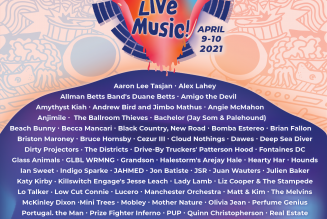
A new study has found that listening to our favorite music and the emotional responses it produces, particularly if it’s bittersweet, is more effective at reducing our perception of pain than unfamiliar relaxation music. The findings suggest that music might be a good drug-free analgesic.
Back in the late-’90s, English rock band The Verve sang, “’Cause it’s a bittersweet symphony, that’s life.” According to a new study, it seems like the band might’ve been on to something, especially when it comes to the effect that music has on our experience of pain.
Researchers at the Université de Montréal have found that our favorite music, particularly the emotions brought on by listening to bittersweet music, might be an effective, drug-free way of lowering our perception of pain.
“In our study, we show that favorite music chosen by study participants has a much larger effect on acute thermal pain reduction than unfamiliar relaxing music,” said Darius Valevicius, lead author of the study. “We also found that emotional responses play a very strong role in predicting whether music will have an effect on pain.”
Music has long been known to have a hypoalgesic effect, meaning that it causes a decreased sensitivity to painful stimuli. But to discern what kind of music was most effective for reducing pain, the researchers inflicted moderately painful thermal stimuli on the inner forearm of 63 participants, a sensation akin to holding a hot teacup against the skin. The pain was paired with music excerpts, each lasting around seven minutes.
Listening to their favorite music strongly reduced pain intensity and unpleasantness in participants, compared to control tracks or silence. Unfamiliar tracks designed for relaxation did not have the same effect on pain sensation as the participants’ favorite music did.
“In addition, we used scrambled music, which mimics music in every way except its meaningful structure, and can therefore conclude that it is probably not just distraction or the presence of a sound stimulus that is causing the hypoalgesia,” Valevicius said.
The researchers then conducted interviews with participants about their favorite songs and conducted an analysis related to four themes related to categories of emotional experience: energizing/activating, happy/cheerful, calming/relaxing, and moving/bittersweet. They wanted to see whether emotion themes could modulate the hypoalgesic effect of favorite music.
“We found that reports of moving or bittersweet emotional experiences seem to result in lower ratings of pain unpleasantness, which was driven by more intense enjoyment of the music and more musical chills,” said Valevicius.
While they don’t define “musical chills” in their paper, the researchers point to previous neurological studies that suggest a dopamine pathway in the brain may be fundamental to both the enjoyment of music and music-induced chills. In some people, the researchers say, chills can manifest as a tingling sensation, shivers, or goosebumps.
The researchers are aware of their study’s limitations, including how long participants listened to music samples. For example, listening to relaxing music for longer might have stronger effects than the shorter tracks listened to in the study. Further research could look at whether favorite music is effective at reducing non-thermal pain, such as mechanical stimulation or chronic pain.
“Especially when it comes to the emotion themes in favorite music like moving/bittersweet, we are exploring new dimensions of the psychology of music listening that have not been well-studied, especially in the context of pain relief,” Valevicious said. “As a result, the data we have available is limited, although the preliminary results are fairly strong.”
The study was published in the journal Frontiers in Pain Research.
Source: Frontiers








